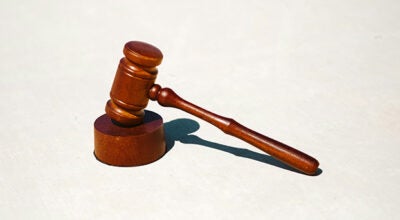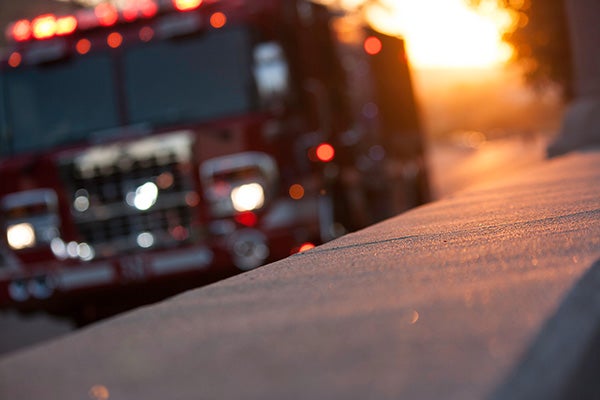‘Chieftains’ on the chopping block
Published 7:38 pm Tuesday, February 12, 2013
Michigan Department of Civil Rights (MDCR) filed a complaint with the U.S. Department of Education Office of Civil Rights (OCR) Friday, asking the federal agency to issue an order prohibiting continued use of American Indian mascots, names, nicknames, slogans, chants and imagery.
Thirty-five districts allegedly responsible for discrimination in primary and secondary schools include the Dowagiac Chieftains, Hartford Indians, Paw Paw Redskins and White Pigeon Chiefs.
Dowagiac has been the Chieftains since 1928.
MDCR’s 34-page complaint asserts new research establishes that use of American-Indian imagery negatively impacts student learning, creating an unequal learning environment in violation of Article VI of the Civil Rights Act of 1964.
Paige Risser, communication director for the Pokagon Band of Potawatomi Indians, said the tribe wasn’t consulted before the filing, so Tribal Council is in the process of reviewing the complaint and talking with its citizens before deciding whether to comment.
Dowagiac Union Schools Supt. Dr. Mark Daniel said he received the complaint late Friday.
“Our position is we’d like to sit down with the Pokagon Band and engage in conversation.”
“We’re waiting to see what happens,” Daniel said. “We in no way want to discriminate against any student.”
The district receives more than $1 million in federal funding, Daniel said.
In March 1990, Pokagon Band Tribal Council and Dowagiac Board of Education signed a joint resolution to insure a spirit of mutual cooperation and respect for future generations. Included in that agreement was adoption of the official logo accurately depicting a Potawatomi Indian chief created by Ron Mix, a member of the Pokagon Band.
“We have seen schools that are determined to maintain their mascot as a ‘symbol of honor’ and an expression of their identity,” wrote Daniel M. Levy, MDCR director of law and policy, in Detroit.
“A growing and unrebutted body of evidence now establishes that the use of American Indian imagery reinforces stereotypes in a way that negatively impacts the potential for achievement by students with American-Indian ancestry,” the filing argues. “Continued use of American Indian mascots, names, nicknames, logos, slogans, chants and/or other imagery creates a hostile environment and denies equal rights to all current and future American Indian students and must, therefore, cease.”
Leslee Fritz, director, public affairs and administrative services, told the Daily News Tuesday it’s hard to predict how long it will take for the process to run its course.
“It’s in the hands of the U.S. Department of Education,” she said. “The time frame is theirs.”
Fritz said MDCR representatives met with OCR in Washington on Friday. It accepted the complaint for review and can restrict itself to evidence presented or seek other evidence to consider.
OCR can grant the relief sought, craft a hybrid or take no action, Fritz said, adding the department has been involved with the issue for a decade, monitoring research, which it says is now at a point where several studies build on each other’s conclusions.
If it seemed to come out of left field for those who thought the matter had been resolved 23 years ago in tandem with the Pokagon Band, Fritz said it was kept “fairly quiet” until the filing because “we know it’s an emotional issue on both sides.”
Until now, opponents of the use of American Indian mascots, including MDCR, have not been able to build a sufficient legal basis for prohibition because harassment requires proving that schools intended for their mascots to be offensive or were so egregious as to be considered universally offensive.
Both of these determinations – intent and offensiveness – are subjective. As a result, supporters and opponents ended up in a stalemate without legal resolution.
MDCR asserts, in its Feb. 8 filing, research now establishes actual harm occurs as a result of the use of American Indian imagery, thus rendering the subjective debate over intent and offensiveness moot.
“The resulting stalemate between those who see American-Indian mascots as complementary and those who see them as offensive has, to date, proven to be as unresolvable as the question of whose mother baked the best apple pie,” the filing said.
The filing highlights a number of studies which show decreased achievement, self-esteem and self-identity among American-Indian students as well as increased stereotyping of all minority groups.
“Because there is now, for the first time, an objective showing that actual harm is resulting and that it disparately falls on American-Indian students, there is no longer any need to question what the school, or what the “reasonable American Indian” thinks about the mascot, the filing argues.
The MDCR complaint asks OCR to determine that the use of American Indian mascots, names, terms, graphics and other imagery negatively impacts a minority of primary and secondary students, thereby denying them equal protection and opportunity; and that OCR therefore order that:
- The use of American Indian mascots, names, terms, graphics and other imagery (particularly those which portray stereotypical Indian images as warriors), will not be permitted in primary or secondary educational institutions that receive federal funds, (except in the very limited and well-defined circumstances described below).
- The term “Redskins” has historically been used as a racial slur and, for this reason, carries particularly negative connotations that accentuate the negative impact of associated stereotypes. Use of the term as a team name by primary or secondary educational institutions that receive federal funds is always impermissible.
- · Where limited uses of images, particularly the use of names of locally significant tribes or tribal persons with tribal support for doing so, can be done in a way that is respectful and which does not reinforce any singular limiting image of Indian peoples, they may be continued, but only within guidelines provided by OCR.
· The use of American-Indian names and imagery by each of the schools named in this complaint falls within the impermissible uses described and must cease.






